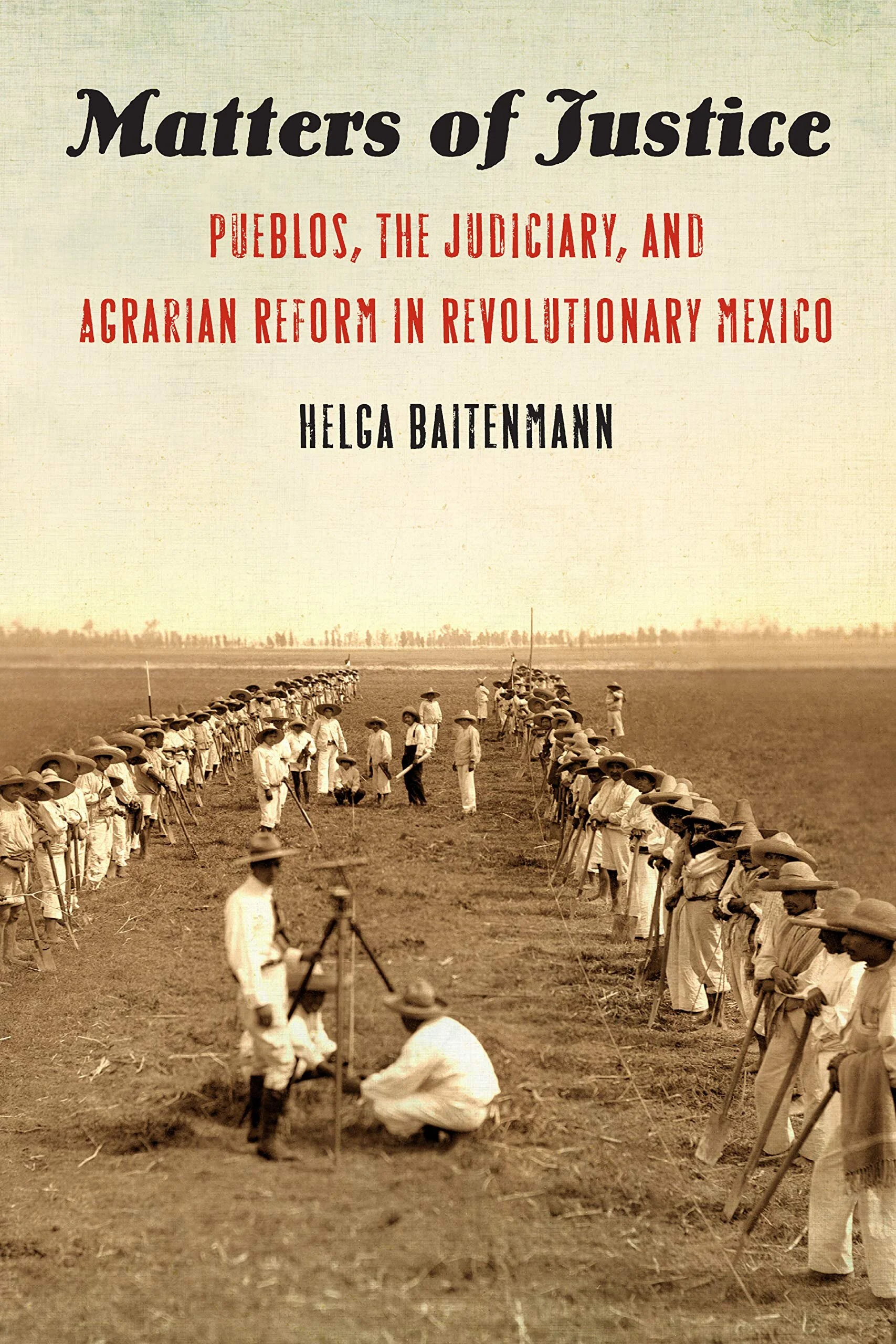Helga Baitenmann, Matters of Justice: Pueblos, The Judiciary, and Agrarian Reform in Revolutionary Mexico (Lincoln, University of Nebraska Press, 2020).
In Matters of Justice: Pueblos, The Judiciary, and Agrarian Reform in Revolutionary Mexico, Helga Baitenmann traces the two divergent avenues that land reform took at the turn of the twentieth century: the Zapatista and the Constitutionalist projects. Based on extensive archival research, the book explores the entanglements of the policies, the judiciary, local and national actors, and the politics of designing and implementing these two large-scale land reforms. While the Zapatista project aimed at a deeper structural change regarding land possession and distribution, it was the Carrancista pragmatic solution to the concrete problema agrario that set the legal framework for decades to come. Baitenmann’s sources challenge the notion of vertical, top-down approaches to the agrarian problem—they portray a contested, horizontal process where petitions, experiments, failed policies, and unfulfilled utopias shaped political outcomes.
Matters of Justice blurs the monumental historiographical break of 1910. By expanding the time-frame, it sheds light on the subtle continuities in agrarian legislation across decades, it shows how previous practices and legislation constraint political possibilities, and it reveals the intricate workings of the delicate arts of state-building and policymaking: a dance of trial and error. The comparison of two parallel, yet similar agrarian reform projects offers a familiar portrait of early twentieth-century Mexican political landscapes: the importance of land restitution, the early outlining of foundational legal figures (ejidos, amparos, dotación and restitución), and the balance between local policy and national politics.
The book is illustrative, but not revealing—an important intervention, but not an urgent one. While extremely well-researched and precise in the use of legal terminologies, at times it reads like one of those monographies à tiroir: a detailed description of the whole archive. Almost every paragraph offers an example, a case, an instance to illustrate a point, but the sum of all of them renders an under-theorized argument. Beyond saying they were two different projects, a close look to how these policies worked “on the ground” may illuminate a wide range of subjects—state-building, archival silences, policy diffusion, the role of expertise, the distance between discourse and policy, to name a few. The idea behind the book remains hard to spell out. It is striking to hold a book written by an anthropologist and make the opposite claim that most disciplinary outsiders usually write: the problem is not too much theory, but too little.
The main advantage of looking at law from an anthropological/sociological perspective lies in considering its practical, concrete consequences without missing its power as language. Instead of approaching it a lawyer would—assessing its internal logic, coherence, the technical difficulties of its particular grammar—the anthropologist analyzes how it works. Free from the formal constraints of the legal mind, she is able to not only say that the law is not a monolithic body but to reveal the logic and exceptions to other unwritten rules. Laws are always bent, broken, twisted, changed, but they remain as a fundamental structure of order, meaning, and politics. Baitenmann’s book is close to this tradition, but misses the opportunity to tap into the many avenues it promises.
